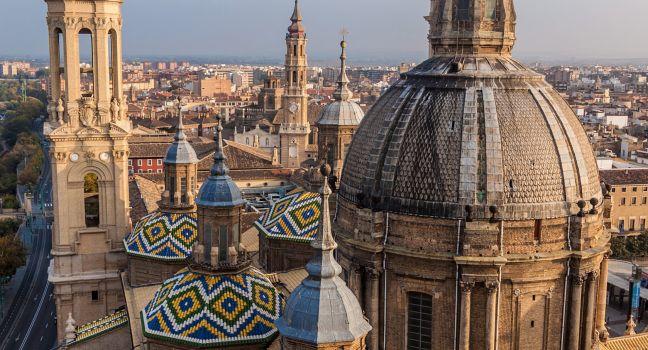Catedral–Basílica de Nuestra Señora del Pilar

This basilica on the banks of the Ebro, often shortened to La Pilarica or El Pilar, is Zaragoza's symbol and pride. An immense baroque structure with 11 vivid tile-topped cupolas, La Pilarica is home to the Virgen del Pilar, patron saint of peninsular Spain and the entire Hispanic world. The fiestas honoring this most Spanish of saints, held in mid-October, are ushered in with processions, street concerts, bullfights, and traditional jota dancing. Among the basilica's treasures are two frescoes by Goya—one of them, El Coreto de la Vírgen, painted when he was young, and the other, Regina Martirum, after his studies in Italy. The bombs displayed to the right of the altar of La Pilarica chapel fell through the roof of the church in 1936 and miraculously failed to explode. Behind La Pilarica's altar is the tiny opening where the devout line up to kiss the rough marble pillar where La Pilarica is said to have been discovered.



